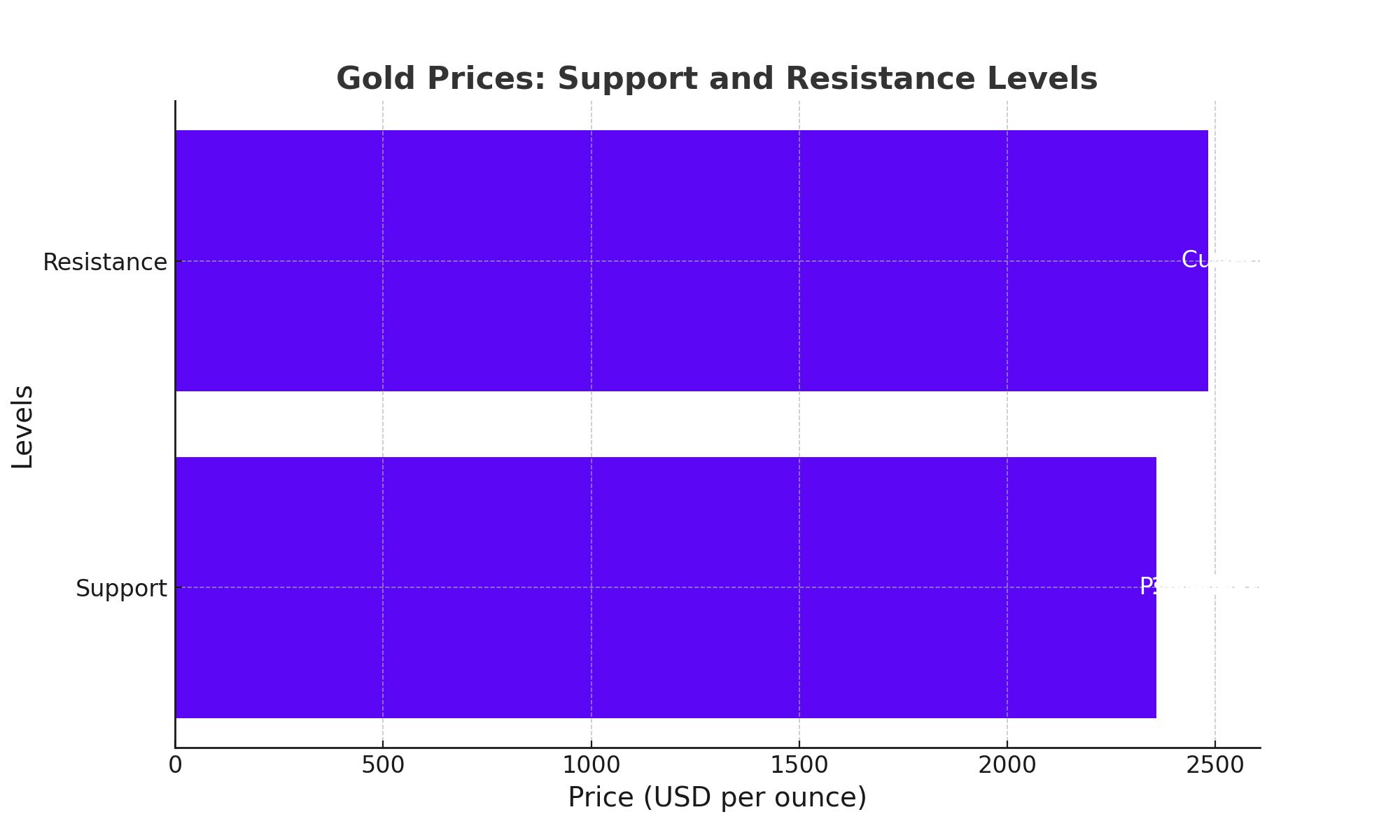Gold Prices Surge Amid Geopolitical Tensions and Economic Data
Middle East Tensions and Their Impact on Gold
Gold prices have experienced a significant boost recently due to escalating geopolitical tensions in the Middle East. Following the assassination of Hamas leader Ismail Haniyeh in Iran by Israeli airstrikes, Brent crude prices surged nearly 3% to $80.81 per barrel. This assassination, a retaliation for a rocket attack in the Golan Heights that killed 12 people, has heightened fears of a broader regional conflict. The geopolitical instability has spurred investors to seek safety in gold, pushing its price higher.
As of the latest data, spot gold was up 0.9% at $2,405.00 per ounce, marking its biggest intraday gain since mid-July. U.S. gold futures also rose, crossing the $2,450 mark, up 1.0% at $2,451.10 per ounce. This rise in gold prices reflects market anxieties about potential disruptions to oil supplies, particularly through the Strait of Hormuz, a critical chokepoint for global oil transit. Approximately a fifth of the world's oil supply passes through this strait daily, making it a significant point of concern for global trade and economic stability.

Economic Data and Federal Reserve Expectations
The recent surge in gold prices is also influenced by economic data and expectations surrounding the Federal Reserve's policy decisions. U.S. consumer confidence rose in July, showing an improved outlook for the economy, while job openings in June exceeded forecasts. Despite this positive economic data, the Federal Reserve is expected to hold benchmark rates at their highest level in more than two decades. Traders are closely watching for any hints of policy easing, which could further impact gold prices.
In Europe, Germany, the largest economy in the bloc, has entered a recession, adding to the economic uncertainties. The European Central Bank (ECB) is expected to reduce interest rates in September, which could further influence global economic conditions and, by extension, gold prices.
Technical Analysis of Gold Prices
From a technical standpoint, gold prices remain upwardly biased. The spot price of gold climbing above $2,400 per ounce suggests strong bullish momentum. Analysts believe that if gold achieves a daily close above $2,400, it could pave the way for further upside, potentially challenging the all-time high of around $2,483 and possibly reaching the $2,500 mark.
However, if gold prices fall below $2,400, the next support level would be the 50-day Simple Moving Average (SMA) at $2,358. Further declines could see support at the July 25 daily low of $2,353 and the 100-day SMA at $2,326, with $2,300 as a significant psychological level.
Future Outlook for Gold Prices
The outlook for gold prices remains bullish amid ongoing geopolitical tensions and economic uncertainties. The recent surge to $2,405 per ounce, driven by fears of broader regional conflict and economic data, underscores the potential for further increases. Analysts are optimistic that continued supply disruptions from geopolitical events, coupled with robust demand for safe-haven assets, will sustain upward pressure on gold prices.
In conclusion, the combination of geopolitical instability, economic data, and central bank policies are key drivers of the current bullish trend in gold prices. Investors will continue to monitor these factors closely, as they significantly impact the precious metal's market dynamics.
That's TradingNEWS





















